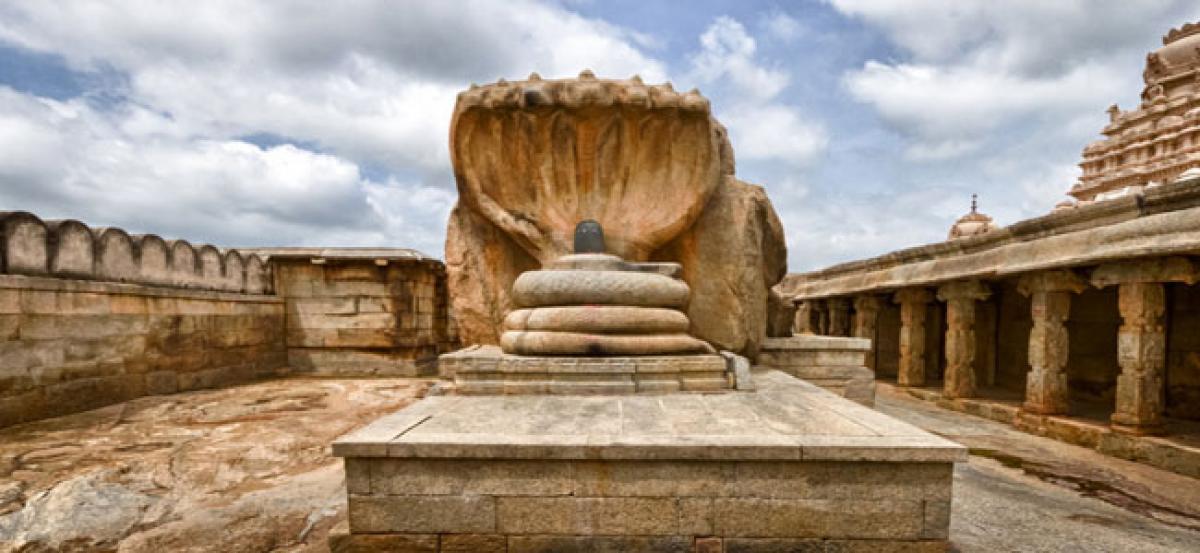Just In

The state government is planning to organize the annual Lepakshi Festival in March on the lines of ‘Visakha Utsav’ and is making hectic arrangements. The festival is intended to show case the rich cultural and historical heritage of the Lepakshi town and it’s religious glory.
Lepakshi(Anantapur): The state government is planning to organize the annual Lepakshi Festival in March on the lines of ‘Visakha Utsav’ and is making hectic arrangements. The festival is intended to show case the rich cultural and historical heritage of the Lepakshi town and it’s religious glory.
The dates for the festival is tentatively fixed as March 30-31, 2018. District Collector Veera Pandian is presently reviewing the arrangements for holding of the state wide festival.
The name Lepakshi originated from a legend in the epic Ramayana. According to the legend, the bird Jatayu fell and broke her wings after fighting a futile battle with Ravana when the later was carrying Sita away to the forest.
Lord Rama while coming in search of his wife Sita sees the fallen bird and says “Le Pakshi” meaning ‘Arise Bird’ and ever since the small temple town was called as Lepakshi. It emerged as a temple hub with multiple temples built with graven idols of Maha Nandi, Le-Pakshi and Lord Shiva etc.
The temple situated in Anantapur district of Andhra Pradesh, is also known as Veerabhadra temple. The architecture of the temple reflects the Vijayanagar style. The architectural beauty of the temple is unparalleled with fine carving arts.
A 10 day long festival is celebrated in the month of February. On this occasion a car festival is conducted, which is attended by huge number of people. The Lepakshi temple can be divided into three sections – the ‘Mukha Mandapa’, (or the ‘Nitya Mandapa’ or ‘Ranga Mandapa’), the ‘Artha Mandapa’ and ‘Garbha Griha’, and the ‘Kalyana Mandapa’ The sculptures and the mural paintings seen in the Natya and Kalyana Mandapams are exceptional for their artistic beauty and skill.
Most of these sculptures portray the mythological puranic episodes like ‘Ananthasayana’, ‘Dattatreya’, ‘Chaturmukha Bramha’, ‘Tumburu’, ‘Narada’ and ‘Rambha’. The Lepakshi temple has been built in honor of Lord Veerabhadra.
According to legend, the Kalyana Mandapa of the temple had witnessed the marriage of Lord Shiva and Parvati. The ‘Natya’ (Dancing) and ‘Ardha’ (worship) Mandapas are the best parts of the temple in terms of architecture. The ‘Natya’ Mandapa has been adorned with sculptured pillars depicting life-size musicians and dancers.
The interiors boast of impressive sculptures in half-relief on the granite pillars. The carvings represent dancers, drummers and divine musicians. Here, you can see Lord Brahma playing drums, celestial nymph Rambha dancing and Lord Shiva engaged in ‘Ananda Tandava’. In the intermediary hall, there is a frieze that depicts geese with lotus stalks in their beaks.
The flawless carvings adorn the entire temple perpetually, all of them done with the minutest of details. Most celebrated for its splendid paintings, Lepakshi Temple has a colossal painting of Virabhadra in the central hall.
In the ‘Hall of Dance’, one can trace eight panels, depicting Puranic legends on the ceiling. Most of the paintings and murals have been devastated by the ravages of times. Lepakshi is a notable store of expertise, which is on the brink of extinction.

© 2024 Hyderabad Media House Limited/The Hans India. All rights reserved. Powered by hocalwire.com







